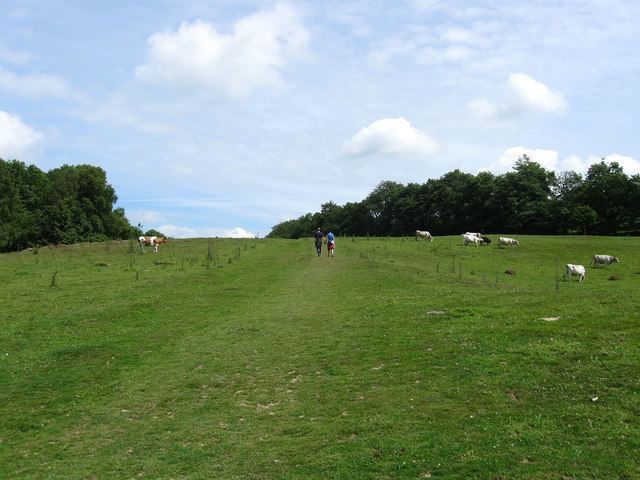 | ||
Dendera senlac hill
Senlac Hill (or Senlac Ridge) is the location where Harold Godwinson deployed his army for the Battle of Hastings on 14 October 1066. The name Senlac was popularised by the Victorian historian E.A. Freeman based solely on a description of the battle by the Anglo-Norman chronicler Orderic Vitalis. Freeman went on to suggest that the Normans nicknamed the area Blood lake as a pun on the English Sand lake.
Contents
Map of Senlac Hill, Battle, UK
It is not improbable that Orderic would have known the English name for Senlac as he spent his early life in England having been born to an English mother. His education, towards the end of his time in England, was from an English monk. However, Freeman's hypothesis has been criticised by other historians as it relies purely on the evidence from Orderic Vitalis. Orderic was born nine years after the Battle of Hastings and chroniclers who were more contemporary with the battle did not use the name Senlac.
Origin
The name Senlac was introduced into English history by the Victorian historian E.A. Freeman, his only source for this being the Anglo-Norman chronicler Orderic Vitalis. Freeman suggested that Senlac was the correct name of the Battle of Hastings site since the name of the hill was Senlac and was near a stream called Santlache. Orderic describes Harold's forces as assembling for the battle ad locum, qui Senlac antiquitus vocabatur and the battle itself as being fought in campo Senlac .
Blood lake
Orderic was born in Atcham, Shropshire, England, the eldest son of a French priest, Odeler of Orléans and an English mother. When Orderic was five, his parents sent him to an English monk with the name of Siward, who kept a school in the Abbey of SS Peter and Paul at Shrewsbury. Although Orderic moved to a monastery in Normandy at the age of ten, he seems to have maintained his links with England. Freeman concluded that it was perfectly possible for Orderic to have known the English name of the ridge. The Chronicle of Battle Abbey describes what it calls Malfosse, which was a large ditch that opened up during the course of the battle (some sources say after the battle), where many soldiers of both sides fell and were trampled to death, the result was rivulets of blood as far as one could see. In fact there was a local legend that was maintained for centuries after the battle that the soil in that area turned red after a heavy rainfall.
.."Asten once distained with native English blood; Whose soil, when yet but wet with any little rain, Doth blush, as put in mind of those there sadly slain, When Hastings' harbour gave unto the Norman powers. Whose name and honours now are denizened for ours. That boding, ominous brook !"
From Michael Drayton's Poly-Olbion 1612
Freeman suggested that Senlac meant Sand Lake in Old English with the Norman conquerors calling it (in French) Sanguelac. Freeman regarded this use as a pun because the English translation of Sanguelac is "Blood lake".
The name "Senlac"
Several historians disagreed with the Freeman analysis. John Horace Round published his "Feudal England: Historical Studies on the XIth and XIIth Centuries" in 1895 and in it strongly criticises the Freeman view. He pointed out that Senlac was not an English word and was simply a fad if not an invention of Orderic Vitalis.
The Norman chroniclers William of Jumièges and William of Poitiers who were contemporary with the Battle of Hastings did not record the site of the battle as Senlac and the Chronicle of Battle Abbey simply recorded the location in Latin as Bellum (Battle).
Later documents however indicate that the abbey had a tract of land known as Santlache (Sandlake) with the name Sandlake continuing for several centuries as a tithing in Battle.
Etymology
The Anglo-Saxon origin of the name Hastings was probably Hæsta-inga (and variations) meaning "clearing of Hæsta's people". However another possible, again of Anglo-Saxon origin, is Asten-enge meaning "meadow of the Asten" (the Asten is the stream that runs through the battlefield).
Freeman considered what Orderic Vitalis called the battlefield, namely Senlac, may have been a corruption of the original Anglo-Saxon name. Other scholars have suggested that the Anglo-Saxon form would have been scen-leag meaning "beautiful meadow".
